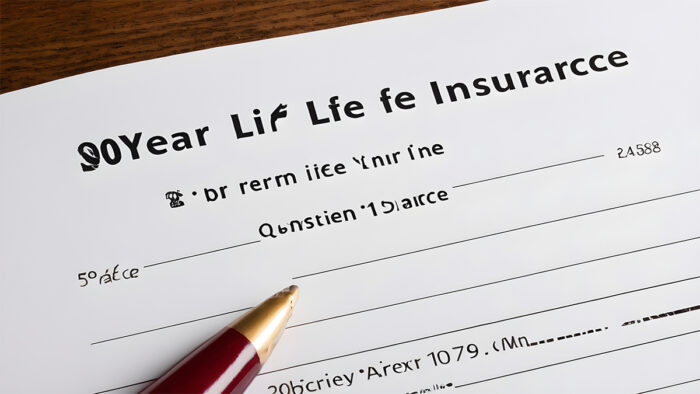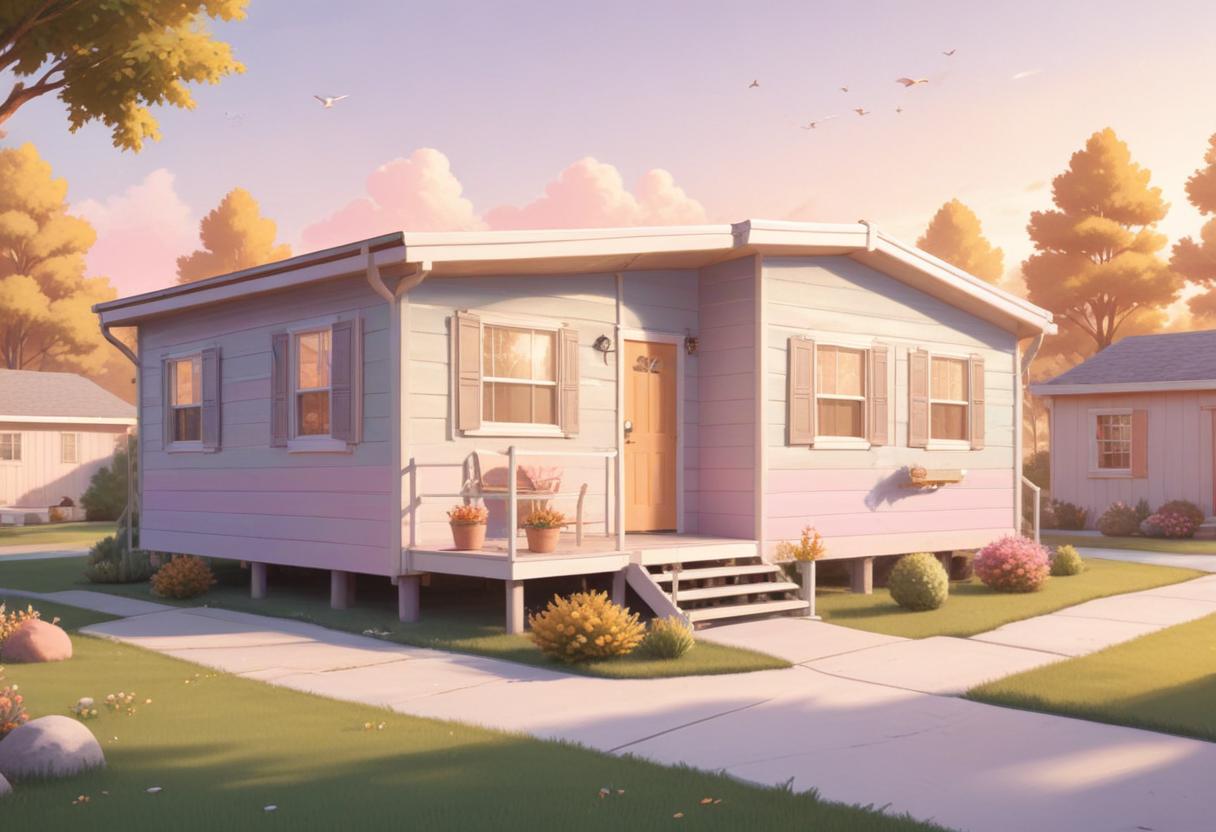If you need life insurance to cover your financial obligations, then you can opt for term life insurance. It offers financial protection for both you and your loved ones. A 30-year term life insurance policy covers you for three decades, and it pays the beneficiary death benefits when the policyholder dies.

30-year-term life insurance is the ideal option if you want a longer policy. You will get coverage for thirty years, even if there is a health change after buying the life insurance policy. As soon as the term ends, you can either renew it for another term or convert it to permanent coverage.
What is 30-Year Term Life Insurance?
A 30-year term life insurance policy provides coverage for 30 years along with a guaranteed cost. Every month, you will pay the same amount to own the insurance policy. If you pass away before the 30-year term comes to an end, then the insurance policy pays out a death benefit to your beneficiaries.
Furthermore, there is no cash value component in a 30-year term life insurance policy. However, the term life insurance policy is more affordable than the permanent coverage.
How Does 30-Year Term Life Insurance Work?
Long-term life insurance covers you for a specific period of time. During this time, you are to pay level premiums that don’t change. If you die while the coverage is still effective, your beneficiaries will get the death benefits as stated in the term life insurance policy. If you are still alive, the insurance policy will expire at the end of the term. However, there is an option to renew it at a higher rate.
After buying a 30-year life insurance policy, you must decide the amount of coverage you want and who should get the payout. You can also choose one life insurance beneficiary or multiple beneficiaries for a term life policy. The beneficiaries can use the death benefit for any expenses. Buying a 30-year term seems like a long time to maintain the policy. However, it reassures you and your loved ones to know that the policy will be available whenever you need it.
After the 30-year term ends, your life insurance policy also expires if you are unable to renew it. If you outlive the insurance policy, you won’t pay any further premiums, and your beneficiaries won’t receive the death benefits.
Who is 30-Year Term Life Insurance for?
There are many instances where a 30-year-term life insurance policy is the ideal option. It is the perfect option if you are married with children and you want to assist your beneficiaries with things such as covering basic living expenses, paying off the mortgage, clearing debts, and helping the children with their school expenses. Certain life events can affect your life insurance.
Benefits of Choosing a 30-Year Term Policy
Choosing a 30-year term life insurance policy offers several benefits:
- Long-Term Coverage: With a 30-year term, you enjoy coverage for a significant portion of your life, providing financial protection to your loved ones for an extended period.
- Affordability: Compared to permanent life insurance policies, 30-year term policies tend to be more affordable, making it easier to obtain substantial coverage without breaking the bank.
- Predictable Premiums: The premiums for a 30-year term policy are typically fixed throughout the duration of the term, providing predictability and stability in your budgeting.
- Flexibility: While providing long-term coverage, a 30-year term policy also offers flexibility. You can choose to renew the policy, convert it to a permanent policy, or let it expire if your insurance needs change over time.
- Peace of Mind: Knowing that your loved ones will be financially protected for a substantial period can provide peace of mind, allowing you to focus on other aspects of your life without worrying about their future financial security.
- Estate Planning: A 30-year term policy can play a vital role in estate planning, ensuring that your beneficiaries receive a tax-free death benefit to cover estate taxes or other expenses without depleting the assets you’ve worked hard to accumulate.
- Supplemental Coverage: If you already have a permanent life insurance policy but need additional coverage for a specific period, a 30-year term policy can serve as supplemental coverage to address temporary needs.
Overall, choosing a 30-year-term policy can be a strategic and cost-effective way to provide long-term financial protection for your loved ones while maintaining flexibility and affordability.
How Much Does 30-Year Term Life Insurance Cost?
The amount you will pay for your term life insurance is based on several factors, which include your gender, age, smoking status, and health. Based on research, the average cost of a 30-year term policy is $336 per year for $500,000 in coverage for a 30-year-old female. The table below shows the average life insurance rate for a 30-year term life insurance policy for different genders, ages, and coverage options.
| Age and gender | $250,000 in coverage | $500,000 in coverage | $1 million in coverage |
| 30 year old female | $240 | $336 | $588 |
| 30 year old male | $276 | $444 | $780 |
| 40 year old female | $300 | $528 | $984 |
| 40 year old male | $372 | $684 | $1,284 |
| 50 year old female | $660 | $1,200 | $2,280 |
| 50 year old male | $900 | $1,680 | $3,216 |
Can I Extend a 30 Year Term Life Policy?
If you would like to maintain your coverage, you can often extend a 30-year term policy past the initial term. However, extending it will increase your premiums.
The life insurance rates will also continue to rise every year you renew your policy. Instead of renewing your policy, you might have the option to change it to a permanent life insurance policy. With this type of insurance policy, you are covered for as long as the premiums are paid monthly.
Is a 30-Year Term Life Insurance Worth It?
A 30-year term life insurance is worth it if you are interested in a longer coverage term and you want to lock in higher premiums while you are young. It is very important to consider what happens when the 30-year term is close to an end. If you decide that you need life insurance beyond the 30-year term, then you can benefit from buying permanent life insurance instead, which covers you for life.
FAQs
Who should consider a 30-year-term policy?
Individuals who have long-term financial obligations, such as a mortgage or children’s education expenses, may find a 30-year-term policy suitable. It’s also popular among younger adults looking for affordable coverage to protect their loved ones for a significant period of time.
How much coverage do I need with a 30-year-term policy?
The amount of coverage you need depends on different factors. This includes your income, debts, future financial obligations, and the financial needs of your dependents. Consider consulting with a financial advisor to determine the appropriate coverage amount for your situation.
Are premiums fixed throughout the 30-year term?
Yes, in most cases, the premiums for a 30-year term policy are fixed for the entire duration of the term. This provides predictability and stability in your budgeting.
What happens at the end of the 30-year term?
At the end of the term, you typically have several options. You can renew the policy at a higher premium, convert it to a permanent life insurance policy, or let it expire if your insurance needs have changed.
Can I cancel my 30-year term policy early?
Yes, you can typically cancel your 30-year-term policy at any time. However, keep in mind that if you cancel before the end of the term, you may not receive any refund of the premiums paid.
Can I convert my 30-year term policy to permanent life insurance?
Yes, many 30-year term policies offer a conversion option, allowing you to convert to a permanent life insurance policy without undergoing a medical exam. This can be beneficial if your insurance needs changing or if you want to maintain coverage beyond the initial term.



